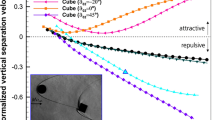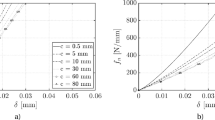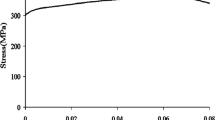Abstract
It is well known that Wagner's theory for the impact between a flat body and a water surface cannot be applied to very small impact angles because of the effects of the trapped air. We focus our attention on the impact problem with a small impact angle, which has not been studied in detail owing to theoretical and experimental difficulties. In order to investigate the transitional impact behavior from a trapped-air impact to a Wagner-type impact, we carried out precise pressure and strain measurements by dropping a plate and increasing the impact angle, β, from 0° to 4° by increments of 0.5°. Based on the experimental results, the time histories of the measured pressures were identified as belonging to three patterns: the Wagner type, the trapped-air type, and the intermediate type. During the transitional impact process, the Wagner-type pattern was observed near the keel at the beginning of the impact, with the trapped-air pattern toward the edge of the plate. The Wagner-type pressure pattern dominated with increasing impact angle. Although high peak pressures appeared in the transitional impact process, the maximum strains measured in the plate were not so sensitive to the impact angle. It was found that the structural response can be estimated by using the average pressure at impact, which leads to a new design approach for small impact angles.
Similar content being viewed by others
Author information
Authors and Affiliations
Additional information
Received: April 12, 2000 / Accepted: August 1, 2000
About this article
Cite this article
Okada, S., Sumi, Y. On the water impact and elastic response of a flat plate at small impact angles. J Mar Sci Technol 5, 31–39 (2000). https://doi.org/10.1007/s007730070019
Issue Date:
DOI: https://doi.org/10.1007/s007730070019




